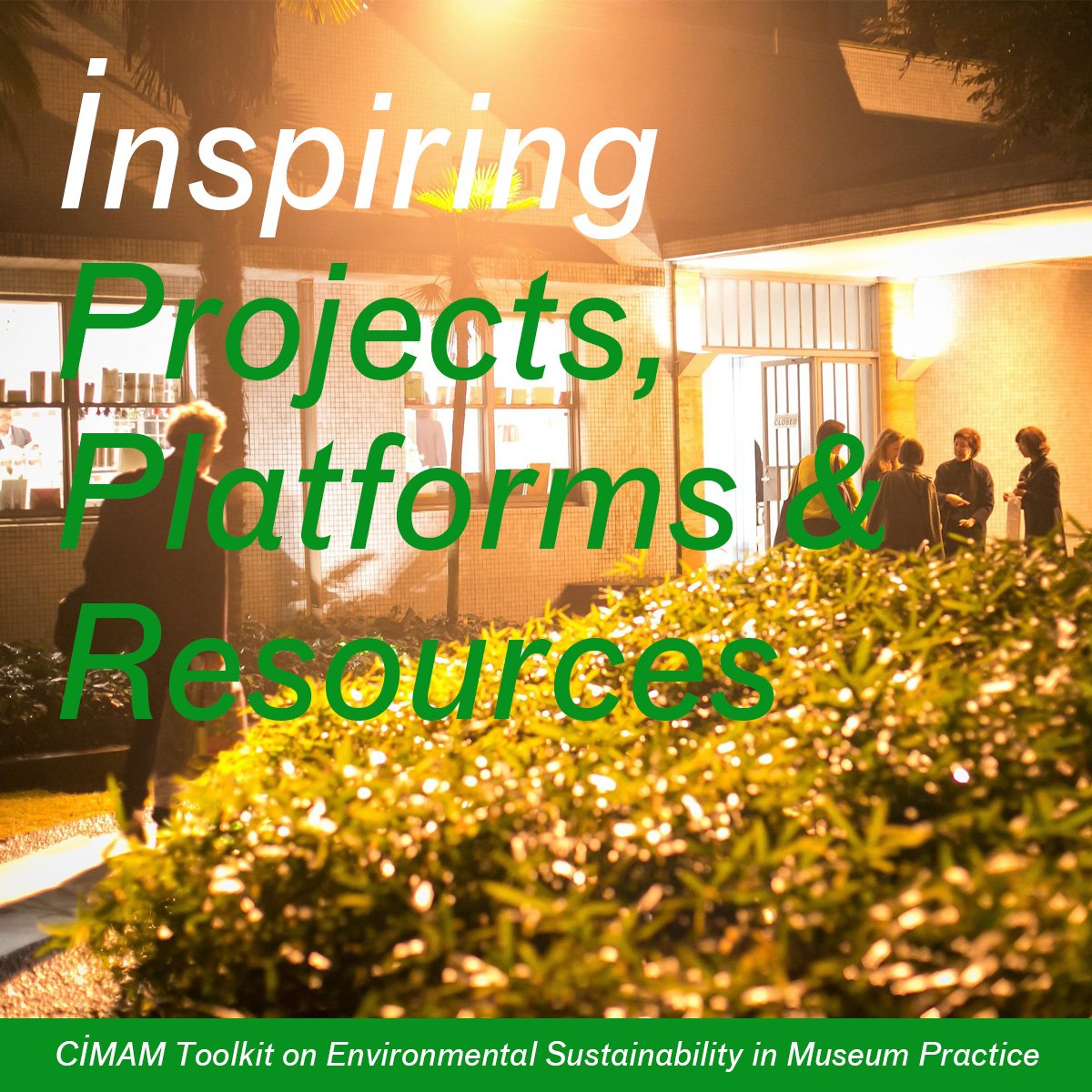Toolkit on Environmental Sustainability. Inspiring platforms

Inspiring Projects, Platforms, and Resources
It is a relief to find so many organizations working to foster the necessary changes to protect the environment. We have included here those platforms focused on museums and curatorial projects that contribute to raising awareness in society.
Ki Culture. A non-profit organization that provides sustainable solutions for cultural heritage. Ki Culture provides solutions to promote sustainable practices for professionals and leverage cultural heritage to effectively make an industry-wide impact.
Museums For Future. Museums For Future is a global movement of museum workers, cultural heritage professionals, and many others to support the #FridaysForFuture movement with positive actions.
Green Art Lab Alliance. An alliance of art organizations and artists. It contains a manifesto, funding guides to develop cultural sustainable projects, a guide for positive printing, a directory of creative responses to sustainability, and much more.
Art/Switch. Aims to develop climate-conscious practices for a carbon zero, future-proof arts sector, helping the arts to use its inherent creativity to rethink its structure and play a leading role in the sustainable shift. Art/Switch functions as an incubator for these ideas, a hub that brings together different players to hasten this movement of change. Based in Amsterdam and New York.
We Are Museums. Museums Facing Extinction. Fosters systemic changes towards a climate-resilient future, good for people and the Planet through community-based actions. A program designed by EIT Climate-KIC and We Are Museums.
Coalition of Museums for Climate Justice. Building museums' capacity to promote awareness, mitigation, and resilience in the face of climate change. It mobilizes and supports Canadian museum workers and their organizations in building public awareness.
Culture Declares. A growing international movement of individuals and organizations in the cultural sector declaring a climate and ecological emergency by telling the truth, taking action, and seeking justice.
Sustainability in Conservation. SiC Sustainability in Conservation (SiC) is a branch of Ki Culture dedicated to promoting environmental awareness and sustainable practices in the conservation of cultural heritage. By Caitlin Southwick.
Reduce Art Flights. A campaign that upholds that the art world – artists, curators, critics, gallerists, collectors, museum directors, etc. – could or should diminish its use of airplanes. It was initiated by the artist Gustav Metzger in 2007 and the website (first established in 2008) is maintained by the curatorial office Latitudes.
Acclimatize. An online project targeting climate change. A source of inspiration full of ideas and reflections on climate change with texts by Olafur Eliasson, Maria Friberg, Isaac Julien, Bigert & Bergström, and by professionals with different perspectives on climate change, sustainability, and creativity. Initiated and organized by Moderna Museet.
Museums for Climate Action. A site that gathers a range of thinking about how museums might address the challenges of a warming world. Divided into three sections –Rethink, Reimagine and Mobilise– the site includes research material from the project team, a suite of concepts imagining possible museum futures in the climate change era, and key resources to inspire radical climate action in the sector and beyond.
Partners for Arts Climate Targets. PACT is an international coalition of organizations within the visual arts engaged in collaborative efforts to accelerate the sector’s broad adoption of collective climate action.
